Matthijs de Ligt: The Leader
“Erik ten Hag shaped the early stages of my career, so he knows how to get the best out of me and I cannot wait to work with him again. I know what it takes to succeed at the highest level, and I’m determined to continue that record at this special club.”
These were the words from Matthijs de Ligt on August 14th, 2024 when Manchester United confirmed the capture of the Dutchman. De Ligt comes with pedigree. At the age of 25, he has won the league title in three countries with Ajax, Juventus and Bayern Munich. A Kopa Trophy and Golden Boy winner, he has made 324 club appearances and has 45 international caps.
But is he still at the peak of his powers after numerous club moves, not playing under a consistent manager and going through some injury issues in recent times?
In this report, I will rate every trait of De Ligt after scouting him thoroughly across many games for Bayern Munich. It will be similar in structure to my previous report on Leny Yoro.
Let’s get into it!
Scout report
NOTE: In all the example gifs in this article, De Ligt is wearing #4 for Bayern and usually playing as the right-sided CB in the backline.
- Defending
I’m going to break the aspects of defending into five distinct parts. In each part, I’ll explain the trait I am measuring, show some examples of it via match footage and then rate De Ligt on that trait.
1A) Pressing
I am defining all forward defending actions as pressing. In a nutshell, any action where De Ligt has to step up the pitch to engage is counted here.
De Ligt has a good sense of timing when it comes to pressing actions. He’s often able to sneak up on his man and press forward to win the ball from then before they can turn and run at him.
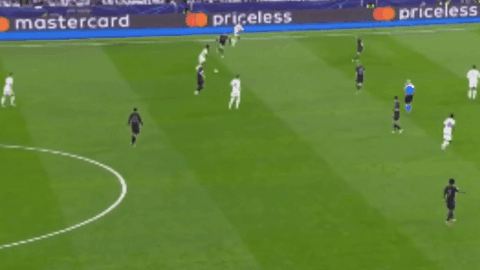
De Ligt wants to avoid a 1v1 where the attacker dribbles at him (we will see why later) and has therefore developed a good sense of stepping up to avoid giving them this room. Even if they are able to get a touch, he uses his physical presence and upper body strength to destabilise them before they can dribble at him.
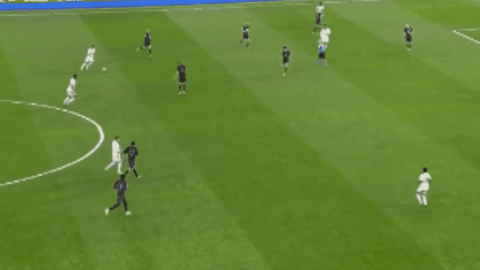
This also extends to situations where the attacker has to collect at an angle or awkward body shape. That slight hesitancy is enough for De Ligt to barge in and win the ball. His sense of timing combined with his power make him a consistent winner when he gets it right.
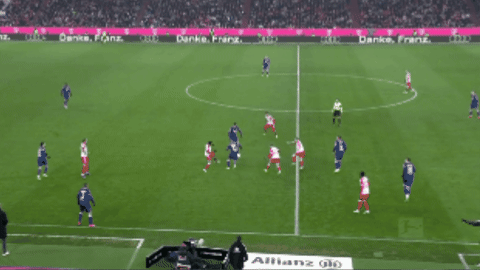
There are situations where he is over-eager to avoid an attacker turning or simply gets done by a very good first touch or turn. De Ligt’s slight lack of agility goes against him here
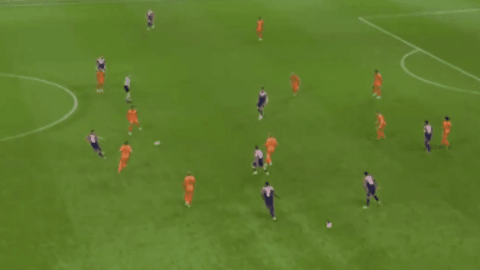
The situations where an attacker has turned and is running at him will be covered in the ground duels section.
Regarding his pressing, another con is that De Ligt doesn’t press very often. He’s not a natural stopper like Sergio Ramos or Cristian Romero. He tends to mix aggressive actions with passive actions. His awareness of his lack of top-end agility to deal with opponents that can turn him is one reason he doesn’t press regularly. That coupled with the above con of getting turned at times are the reasons I cut some marks.
Pressing: 6/10
1B) Box defending
I am defining all backward or deep defending actions as box defending. Actions where the CB has to drop deep close to his box to engage or defend while tracking back.are covered here. I’m also including the cover play actions of positioning and sweeping behind the line in this section.
Let’s start with the good bits. De Ligt has very good awareness in the box. He gets good interceptions and clearances because he is a good reader of danger when deep in his box and doesn’t have to cover much distance to engage which he does cleanly and quickly with consistency.

Might sound odd, but De Ligt gets an unreal amount of blocks in his box. I’ve seen a lot of footage and he just seems to always be in the right position to block shots. A combination of his large body and technique to make himself bigger (without conceding hand-balls) and his good reading of the game, this highlights De Ligt’s excellent reactive instincts.
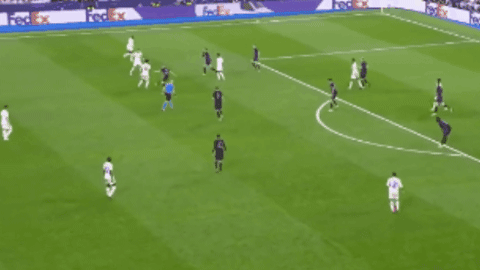
The main issue for this section comes when it comes to backward running in space. If De Ligt is isolated or has to deal with cutting a pass or dribble while running towards his goal, he can be beaten. This isn’t to say that he’s slow, but his acceleration and agility cap his ability to keep up with faster players. Here’s Dortmund’s Adeyemi burning past De Ligt and scoring even though the latter read the situation well and ran as fast as he could.
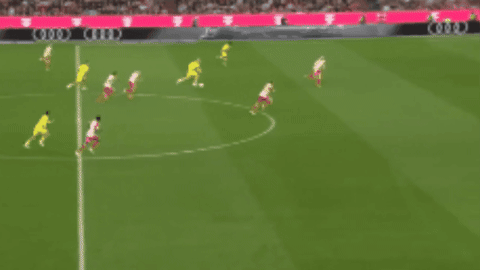
In summary of this section, I like De Ligt’s box defending instincts. He guarantees a presence which mixed with his great positioning and awareness make him a monster for interceptions, clearances and blocks in the box. It’s reverse running situations in space where he is susceptible. Overall, still good.
Box defending : 8/10
1C) Channel defending
I am defining all sideways or wide defending actions as channel defending. Actions where the CB has to drift sideways to engage or defend while tracking an opponent on the wing.are covered here. This often happens when the fullback steps up and the opponent player attacks that space, so it is also related to playing in a high line and high press setup.
Closely related to what we discussed at the end of the previous section, De Ligt is aware of his weakness when running alongside a fast attacker and this situation shows up in channel defending as well. De Ligt’s go to move is to ….. avoid channel defending. I’ve noticed in many situations where he could have gone wide to engage, De Ligt displays his passive nature by dropping towards goal and cutting the eventual path or buying time for a teammate to come out and help him (usually the fullback on that side).
This is a clip that follows Adeyemi’s goal from the same game vs Dortmund. This time De Ligt knows he has teammates recovering and just charts his path to his own goal instead of drifting wide.
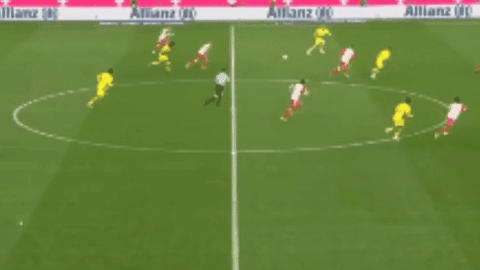
Another sequence where De Ligt delays engagement in a bid to not get dribbled past on the wing. Once he has his fullback close enough for pressure and the attacker has reached the byline, De Ligt approaches to sandwich the opponent before it leads to something dangerous. Good awareness of one’s limitations.
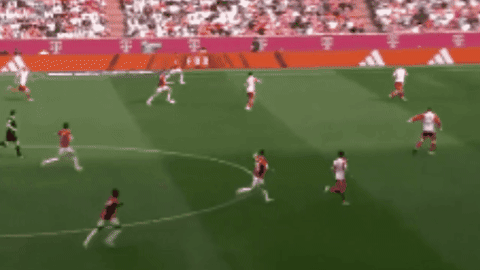
On the rare occasions De Ligt knows he has the position advantage on his man or is facing a slower attacker, he is able to engage wide and win his duel. He defends channels rarely but when he does he comes out on top.
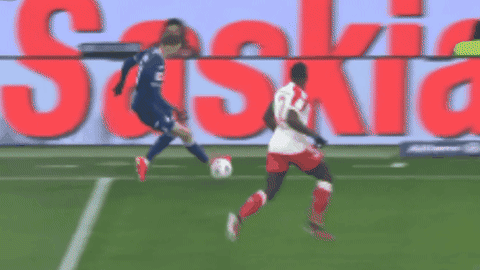
In summary of the channel defending section, De Ligt isn’t really good at it and doesn’t really engage wide as a result of not wanting to get beaten on the wing. His go-to move is to delay for backup. But the good news is that he has good decision-making and positioning to pick his moments and ensure he doesn’t give away a big opportunity.
Channel defending : 5/10
1D) Aerial duels
More self-explanatory section, I am defining all duels with an opponent in the air as an aerial duel. Basically, a header contest. I’ll also be covering uncontested headers and attacking headers in this section. I won’t be covering aerials in any other section.
De Ligt is strong aerially. Standing at 1.89m, his tall frame multiplied by his broad physique make him a towering presence in the air. He has averaged an aerial win % of 60-65% for most of his career which usually puts him in the top 20 percentile of the league.
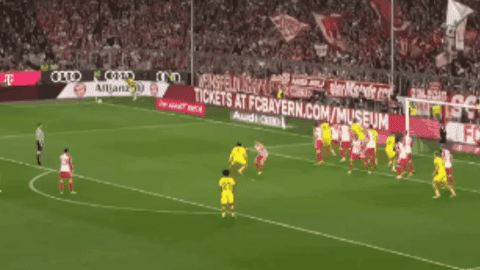
There are times his lack of jump means he gets beaten or is only able to muster a low-powered looping clearance. This is the reason for him not being in the top 5 percentile for aerial win % (like Harry Maguire).
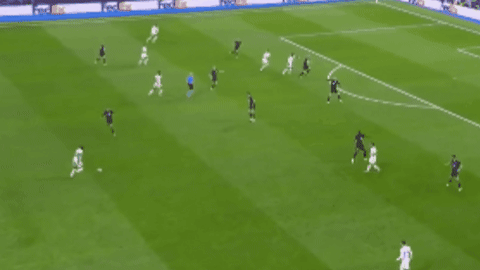
This shows up more clearly in open play when defending vertical long balls because the duellers have space to charge their jump instead of a quick vertical jump. I’d say that it’s less of an issue in set pieces since there is only time to jump vertically from a standing start which suits De Ligt. The run-and-jump situations in open play are where De Ligt can be beaten coz of his lack of agility and spring.
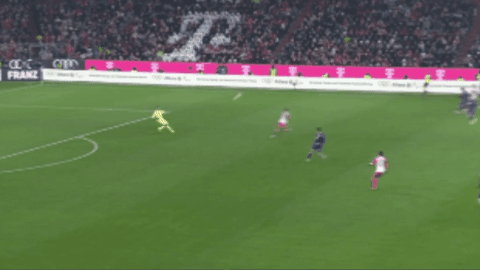
Overall, De Ligt is a great aerial dueller. He isn’t elite since his lack of jump prevents him from gaining 65+% aerial win % and at times results in loose clearances especially in open play. But those are small gaps.
Aerial defending : 8/10
1E) Ground duels
I am defining all duels with an opponent on the ground as a ground duel. Basically, a classic isolated 1v1. This often occurs in transitions versus opponent dribblers running at the CB or when the high line has been breached to isolate an opponent attacker vs CB.
You can also consider it as the next step of the pressing stages we discussed. What happens when an attacker is able to turn and run at De Ligt? I cover that here.
Let’s start with the good parts. Even when being run at, De Ligt’s positioning, awareness and odd knack of getting his body into good areas to intercept or tackle prove valuable.

An extension of channel defending, when De Ligt does decide to engage wide, because he has chosen the right window to trap his marker on the sideline, he is able to come out strong in a ground duel. Again, his timing and decision to engage is key here. He doesn’t often give into the aggressive side of himself.
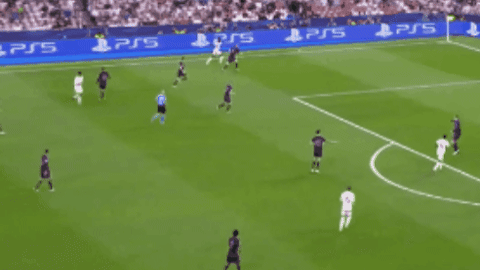
In fact I’d say his duels in wide areas are a lot more reliable than anywhere else. He is able to limit the space and two-way opportunity for a dribbler by sandwiching him to the touchline.
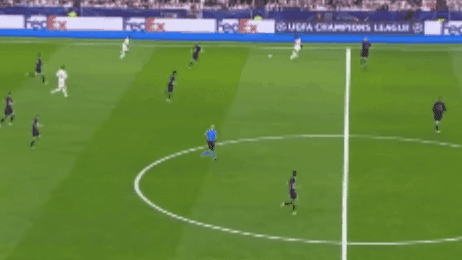
Now for the not-so-good parts. De Ligt’s turning speed is an issue. Which is why dribblers with quick feet that force him to shift weight quickly often get the better of him. Here’s an introductory clip into this issue. De Ligt can almost be toyed with.
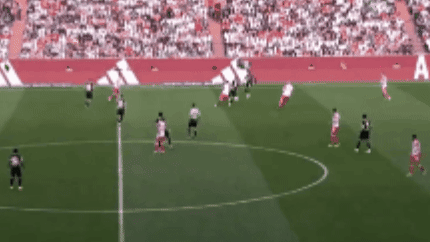
This makes him very reliant on getting the first tackle attempt correct because he can rarely recover from a lunge to turn his body and engage again. Most dribblers can twist the other way and progress.
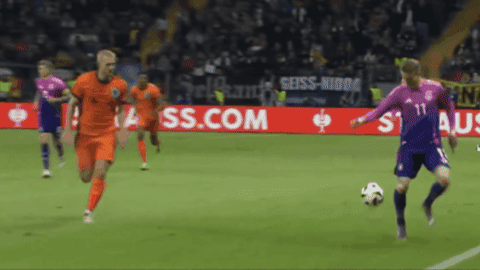
The issue is that it is simply a physical limitation because De Ligt’s positioning, timing and body usage are all good. There are many moments where he gets all of this correctly and is still beaten by a pair of quick feet..
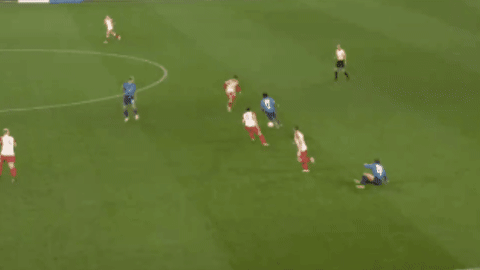
In deeper areas, this becomes a bigger issue since a quick dribble can put De Ligt on the ground if his first attempt fails which provides an easy path for the opponent.
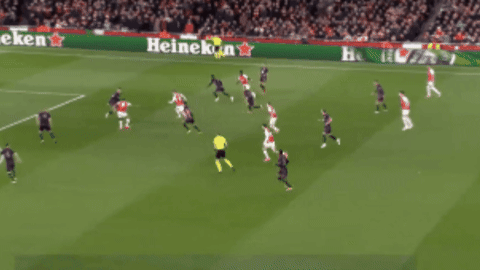
On some occasions, De Ligt is able to recognize his mistake after having committed to the duel and is forced to concede a foul. The classic take-one-for-the-team. Expect to see this happen when we are defending transitions and he can’t rely on recovery of others.
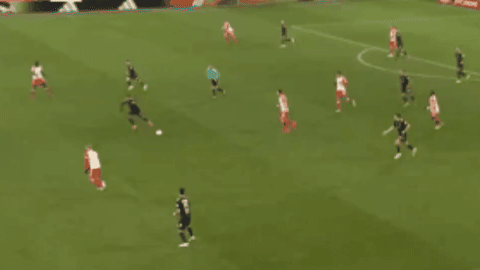
In summary, De Ligt has some major issues in ground duels. Once an opponent has a run at him it gets very tough for De Ligt to keep up and turn and move as quickly as any decent dribbling forward. He tries to make up by limiting such situations to the flanks, or winning the ball early with a well-timed lunge, but those are easier said than done. This is a clear gap.
Ground duels: 4/10
That concludes our defending section. Here’s a snapshot of De Ligt’s scorecard so far.
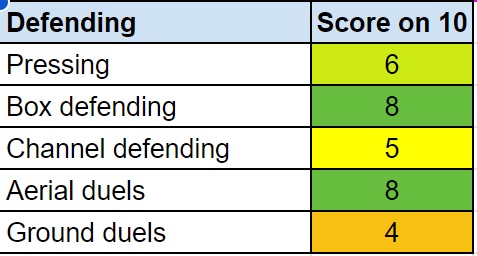
- Passing
In modern football, a center-back’s abilities on the ball are as important as off it. Especially, for a top team that is expected to keep the ball more often than not and break down opponent blocks regularly. In this section, I will analyse De Ligt’s passing traits.
2A) Pass security
Let’s start with the basics. Is the CB a secure passer? Is he able to handle many passes and ensure they safely reach their target? Does he ensure possession security in the build up phase of his team? Does he position himself in a good area to receive to help his team protect the ball and keep moves going?
De Ligt looks good for most of these questions. He has the reliability and security of a seasoned veteran and keeps things simple and safe. I find that he makes a lot of passes to his goalkeeper to restart build up in a game.
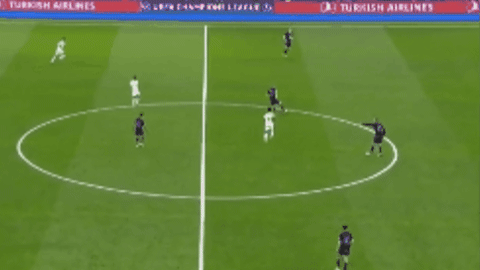
His other usual safe pass route is the short slip to the DM. This is seen lesser (I’ll explain why in the short progression section) but it’s still something he exercises when opponent pressure in the centre of midfield is low
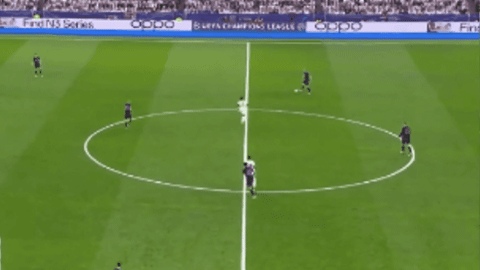
In conclusion, I don’t find any issues in this section. The reason I’ve cut 2 marks is related to the next two sections, so I’ll explain myself there.
Pass Security : 8/10
2B) Pass empathy
“Passing the ball is communicating with another person; it’s being in the service of another person. It’s crucial. For the pass to be a good one, the player has to put himself in the position of the person who’s going to receive it. It’s an act of intelligence and generosity, what I call technical empathy.” — Arsene Wenger.
The above serves as a good definition of pass empathy. Is the power, speed, spin and direction of your pass putting your teammates in good positions for their next action?
In De Ligt’s case I find his technique of passing very good. He usually lands crisp passes weighted well to find his teammate. One complaint I have of him is more mental than technical. I feel often that De Ligt passes to the feet of his teammates or even a conservative step behind to secure possession. He rarely plays it in the space ahead of a teammate to encourage a dribble or run. Perhaps, De Ligt’s cautious mentality shows in his pass empathy as well.
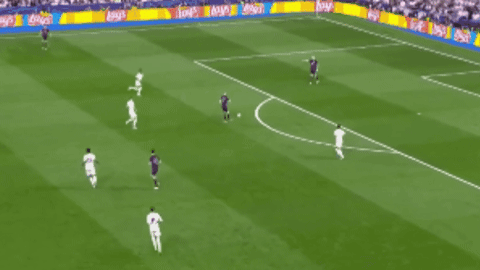
Pass Empathy: 7/10
2C) Short pass progression
A progressive pass is a forward pass that attempts to advance a team significantly closer to the opponent’s goal. Different stats providers have different ways to measure this stat.
Anyone visiting fbref will notice that De Ligt’s progressive passes stat is in the top 10 percentile, insinuating that he’s highly progressive. In this section and the next, I will look to debunk that claim by splitting progression into 2 parts – short and long progression. The former deals with how De Ligt progresses using short grounded passes.
From the stat, you would think that De Ligt attempts a high number of central line-breaking passes, but this couldn’t be further from the truth. De Ligt’s go-to progressive pass is the safe down-the-line pass to the same side fullback. These passes usually start just inside De Ligt’s half and venture into the opponent half to be counted as progressive on paper but actually rarely progress the game or can be called line-breaking. They are also made when never under pressure.
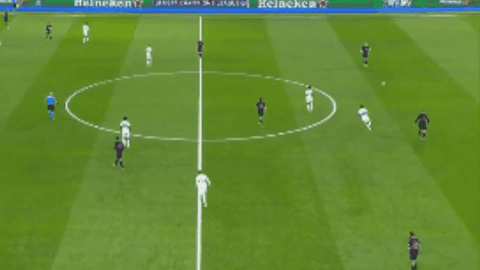
He does this a few times every game and is something he is comfortable with. Obviously, they still count as progression, but the sheer volume of these passes colour that stat in a certain way and hide the fact that De Ligt simply doesn’t attempt passes that aid central progression through the opponent block.
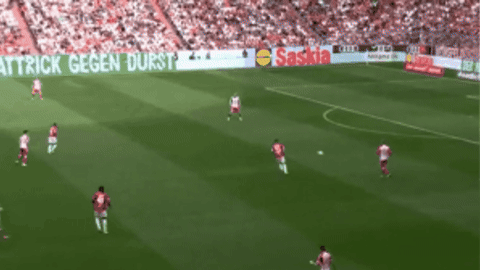
Even his favourite pass isn’t always on lock. This is where the pass empathy issues comes in. De Ligt’s tendency to stray on the slower or backwards side sometimes makes his passes readable. A stronger pass on his teammate’s front foot could have avoided the interception here.
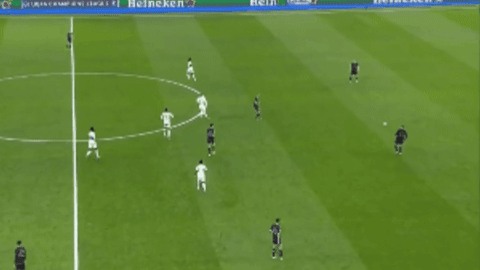
When faced with a well organised opponent block, De Ligt’s lack of creativity and vision shows clearly. Without his bread-and-butter fullback pass, he looks lost and plays it safe. Don’t be surprised to see such scenes when faced with good EPL mid blocks
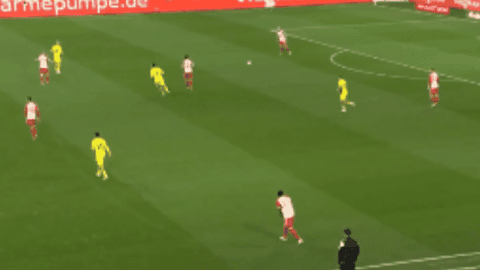

In summary of this section, I find De Ligt’s progressive stats to be a very wrong picture of his actual line-breaking ability especially from the point of view of aiding central progression for the team. It’s just not something he has in his locker.
Short pass progression: 4/10
2D) Long pass progression
The long pass version of our previous section.
If you guessed that this is another way in which De Ligt racks up easy progressive passes without actually being progressive, you would be right. The only difference is that the larger-distance passes that count as progressive in this case are – ones to the opposite side fullback!
Here’s a clip summarising this and the previous section. 2 passes that both count as progressive but are essentially safe passes to both fullbacks that didn’t really help the team break the block but instead just play around it without penetrating
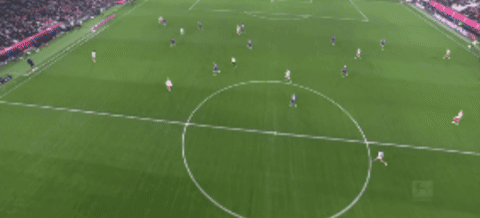
I still like the fact that he attempts some switches and long balls when he has good time and space, but largely speaking there’s nothing very creative or actually progressive here
Long pass progression: 6/10
In conclusion to De Ligt’s passing section, I feel he has a good hold on secure passing that rarely gives away possession, but he racks up progressive passing stats with many basic passes to his fullbacks that don’t actually help his team progress.
Our scorecard so far looks like:

- Carrying
I’m covering all aspects of ball control from a CB’s first touch to long-distance dribbling in the carrying section. A vital tool in a defender’s arsenal is the ability to break lines via carrying and this is another trend modern football has been going towards with the top managers desiring carriers from deep to disrupt opposition shapes and create spaces.
3A) Close control
In this part, I’ll be analysing De Ligt’s first touch and ball manipulation to set himself up for his next action. Essentially, how he receives, scans, turns and gives himself the room to pass or carry after that.
I find no issues here. De Ligt has a very neat and experienced first touch. He kills power neatly and is able to quickly manipulate the ball for the next action as well. Here’s a sequence with 2 such quick moments.
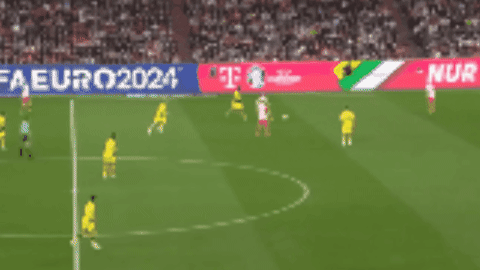
Very few issues with this trait.
Close control: 8/10
3B) Carrying under pressure
An extension of the previous segment, but with the addition of intense opponent pressure and judgement of the variety and distance of the CB’s dribbling out of such situations. With increasing finesse of pressing patterns across teams, being able to carry under pressure and help the team progress is now a vital trait for a modern CB.
De Ligt struggles under pressure. His go-to move when charged is actually to hoof it long. He doesn’t have the agility or dribbling technique to wriggle his way out of such situations or beat his man or carry into a safer space and give himself time for the next action. He usually uses a 1-touch move when pressed.
Like an aimless clearance.
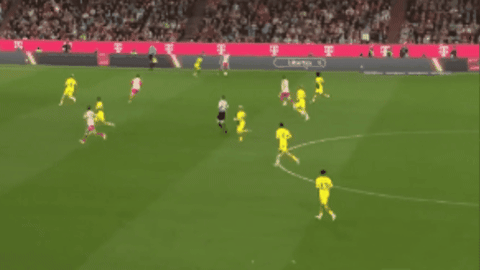
Or a first-time pass without risking a turn or carry.
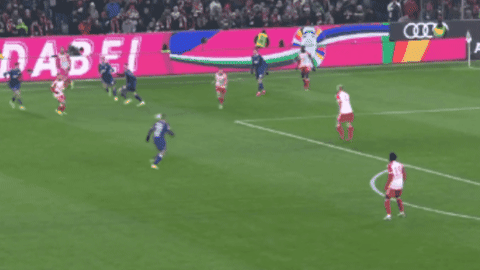
At best, he is able to push the ball into space and use his power to escape situations if the angle of reception and opponent pressing direction is convenient to do so.
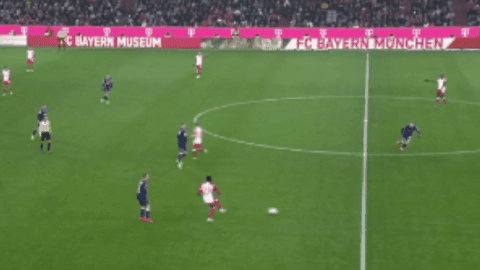
All in all, I see this as a major gap in De Ligt’s game as well. He is not press-resistant, simply put. You can expect a safe pass-back or clearance if De Ligt is under pressure. The saving grace is that he rarely loses the ball in dangerous areas thanks to his awareness of his limitations.
Carrying under pressure: 4/10
3C) Carrying in space
What does the CB do when the opponent isn’t pressing and sitting in a deeper block and his team needs him to venture into space aggressively and either bait a press or put himself in a good situation to disrupt the block? What does the CB do when his teammate has baited an opponent and played the CB in the space created?
De Ligt’s carrying in space is basic. When provided with the opportunity to dribble, he is able to do so without much speed or skill. But he’s able to bridge spaces and pull off actions after that. Often this means a dribble forward from RCB and pass to RB. Basic stuff. Like the progressive passes, this is also how he racks up many of his progressive carries.

Even when space is created via build up on the other side and presented to De Ligt, he’s rarely able to take advantage due to lack of speed, vision and forward-thinking. Often he gets those RB/RCM spaces to carry into and help destabilise opponent blocks but is unable to make much of it. Imagine a Rudiger or Bastoni or Gvardiol in these kinds of situations.
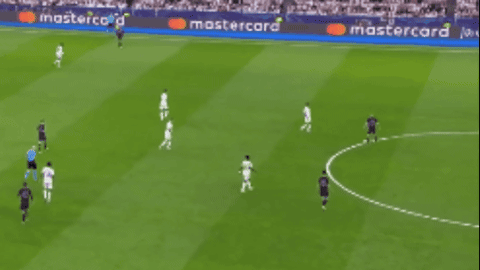
Again, I wouldnt call this trait a strength by any means. De Ligt is unable to take opportunities when space is created for him because he lacks the drive, dribbling power and positivity to make the most of it. But it’s nothing negative since he does use space decently and aid the team in passive ways. For this trait, average at best.
Carrying in space: 5/10
That closes our carrying section. Here’s a summary of all sections and traits so far:
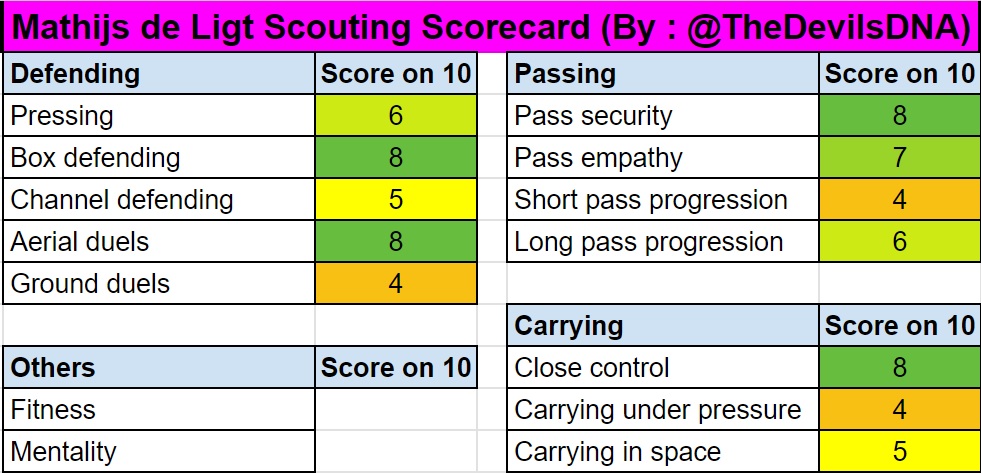
- Others
4A) Fitness
Just one look at De Ligt’s appearances across years makes it clear how (not) available he has been.

In his 8 senior years so far, De Ligt has crossed 40 starts in all competitions only twice. His average is 31 90s per season which roughly correlates to 55-60% availability. And at least for the last 7 of those years, De Ligt has been the trusted starter at the club.
The next logical step is to look at his injury record.
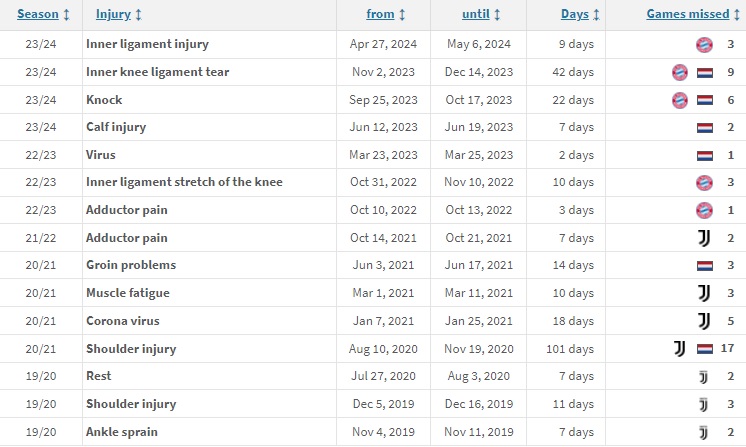
Barring 21/22, De Ligt has had at least 3 different injuries in every season of his last 6. The worst part is that 23/24 seems to have been his worst yet with 4 different injuries in 4 different parts of the season. Such kind of continuous interruption in his playing time affects his consistency and the team’s as well. His fitness isn’t reliable.
My bigger worry is the trend for players who start their careers early and play a lot before the age of 21. Their injury issues and fitness concerns catch up faster than others. De Ligt racking up 136 appearances as a teenager goes against him in this regard, even as impressive as it sounds. The increase in injuries he’s had in recent years points at a worrying arc and it could even be one of the reasons Bayern were willing to sell him despite not actually having any major problems with his attitude or performances.
De Ligt’s fitness isn’t reliable and I’m not confident it gets better as he ages.
Fitness: 4/10
4B) Mentality
The final section of this report is on De Ligt’s personality. We cannot complete a report without touching upon the person he is, beyond the player he is. Here are some anecdotes that highlight his mentality:
- De Ligt after winning the 2018 Golden Boy (the first defender to ever win the prize) and Kopa Trophy for the best U21 player on the planet a year later: “When you win the Golden Boy [award], that gives some pressure. But as a player, you have to love the pressure. Because it says you are something good. Seeing it this way gives me some space in my head.”
- De Ligt on being named Ajax’s youngest captain when Ten Hag handed him the armband in March 2018: “I was growing into that role. I became more confident and realised I could make a difference. That really helped me develop, also mentally.”
- De Ligt on Erik ten Hag’s influence: “The most important coach for my development. Even at 18, he saw me as someone who could lead a team, who could lead by example, who could be a good captain.”
- De Ligt on knowing his own limitations: “You couldn’t ask me to dribble past opponents and score or to play the perfect pass every single time. I know that I can do it sometimes, but it’s not my natural skill. My natural quality is to be always focused, to be ready to fight, to lead, to try to be as consistent as possible, instead of trying to show everybody what I can do (on the ball).”
- De Ligt on what makes him a good defender: “With my power and pace, I can dominate opponents, but I’m not one of those defenders who can simply outrun everyone. I’m relying a lot on the mental side of the game. My biggest strength is reading the game and anticipating what’s happening.”
- De Ligt on self-assessment: “It’s a constant battle of becoming a better player. Every season, I want to be better than the previous one. It’s good to look at certain numbers — how many sprints, how many duels won — but a lot of stuff that defenders do doesn’t show up in the stats. I want to feel confident, I want to feel dominant.”
The reason I stuck to De Ligt quotes to build an image of his personality is because he is an extremely self-aware, humble and honest person. The points I mentioned about De Ligt knowing his limitations as a footballer stem from this mentality. It’s what makes him efficient and reliable at what he does well. There are very good reasons he was captain at a young age and has continued leadership responsibilities at future clubs since.
Mentality-wise, we are getting a superb character who will enrich the dressing room.
Mentality: 9/10
Our final scorecard for Matthijs De Ligt reads:

Final thoughts and Manchester United fit
I’ve seen people compare De Ligt to Harry Maguire but I think there is a better and more apt comparison to quote. He comes as a replacement for Raphael Varane and I think he shares many characteristics with Varane too – a good leader, a great box defender, aerially strong, physically imposing, a good reader of the game and safe without being progressive or creative in possession.
How does this fit at Manchester United?
The likeness with Varane and from what we’ve seen early in this season so far hints at us continuing the tactics from last year which are a good fit for De Ligt. As a box defender and reactive CB, De Ligt is good while his ability to progress via wide channels is a fit with our focus on wide or direct progression instead of short central progression.
Given De Ligt’s lack of agility, carrying and two-footedness, I think the RCB role would suit him best. Maguire has also been picked for the RCB slot. Lisandro Martinez plays in the LCB slot exclusively but has never managed more than 60% availability in a season. This leaves Yoro, who simply as a by-product of his age and the above dynamics, might end up playing more LCB in his initial time at Manchester United.
For the 24/25 season, what we might see is:
RCB: Maguire, De Ligt
LCB: Lisandro, Yoro
But as Yoro develops, we might see more of Yoro-Martinez start while one of Maguire or De Ligt might suffer. The general feeling seems to be a Maguire sale leading to a LCB buy (Branthwaite possibly).
But another point is that any evolution in the tactics will leave De Ligt behind rather quickly. He might struggle to contribute in a high line progressive system that focuses on short build up. So, a lot depends on our tactical evolution and the manager’s future. I think De Ligt is a good fit for our current tactics under our current manager, but any evolution or change in either might not go well for him. That said, his awareness of his limitations and positive traits might always make him a good squad player regardless of what happens. His age of 25 means that there is still scope for recouping a fee in the near future even if things don’t go as per plan. Until then, Manchester United fans can enjoy the best of The Leader.
Hope you enjoyed this read. If you’re here from anywhere else do follow me on Twitter. Let me know your feedback and thoughts there.
(Stats credits: fbref.com, transfermarkt.com)
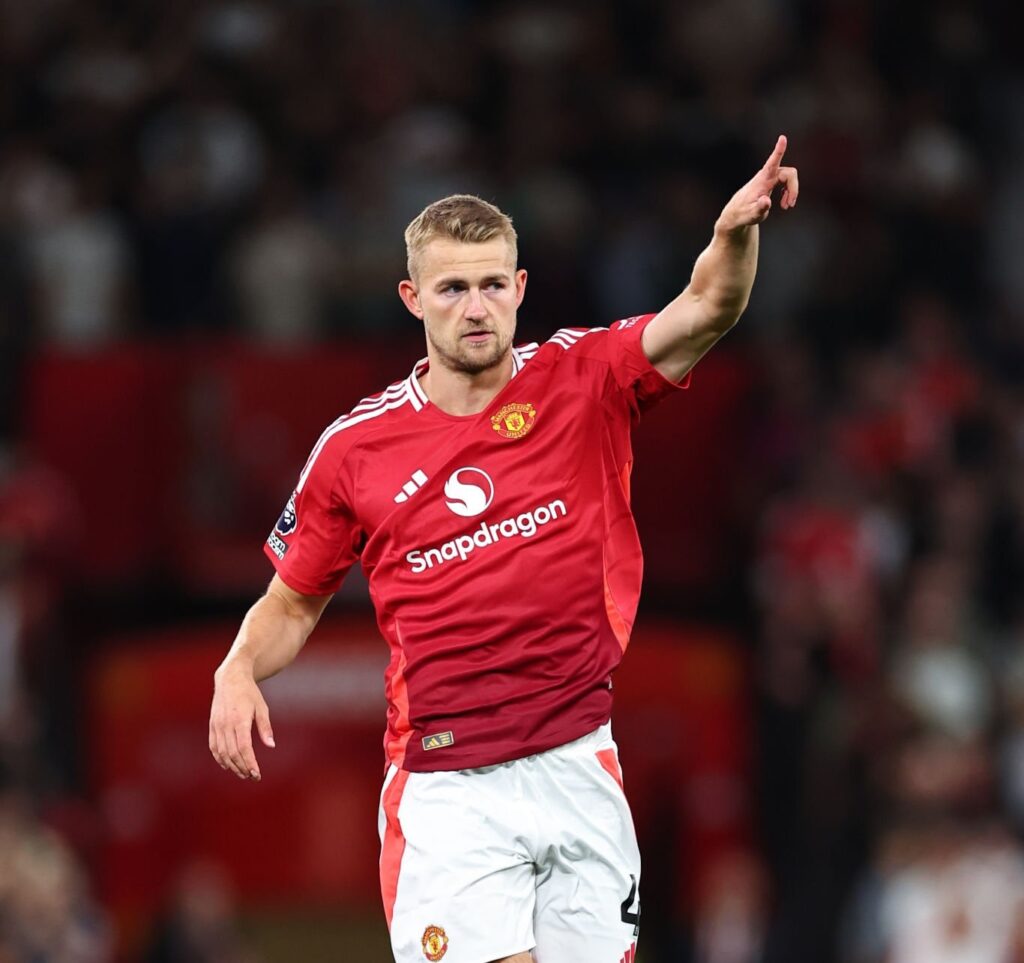




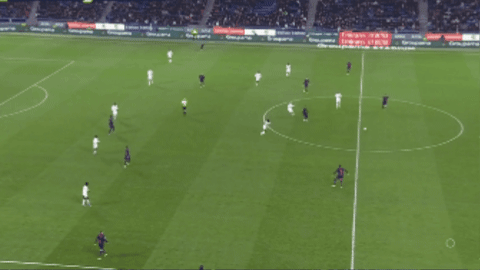
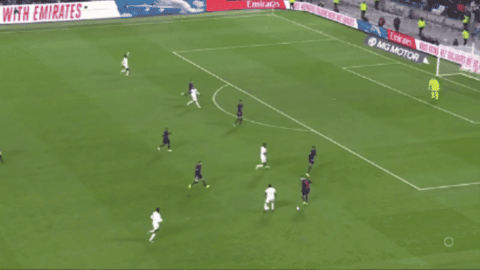
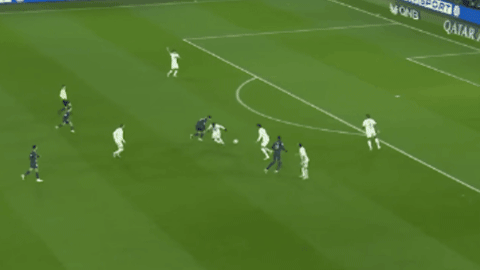
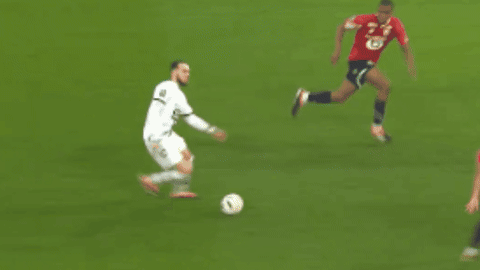
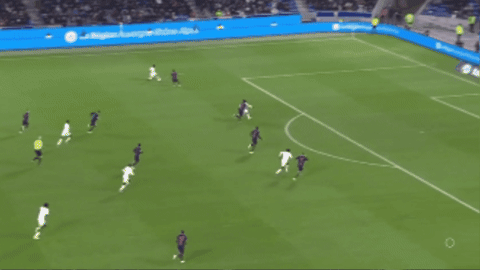
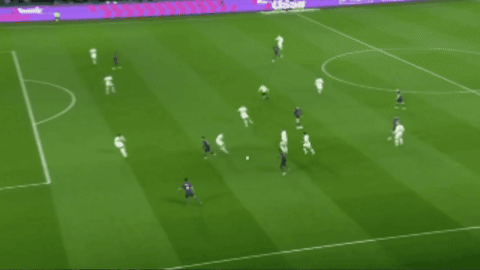






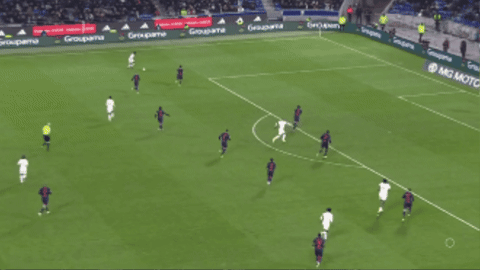
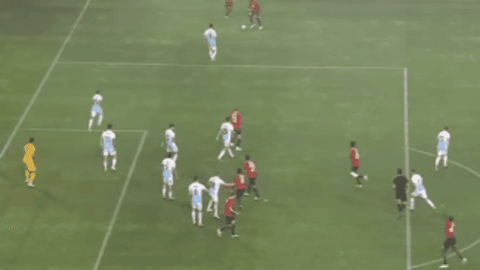
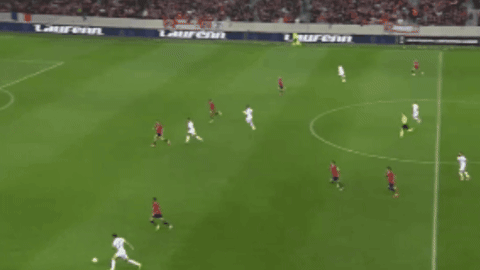





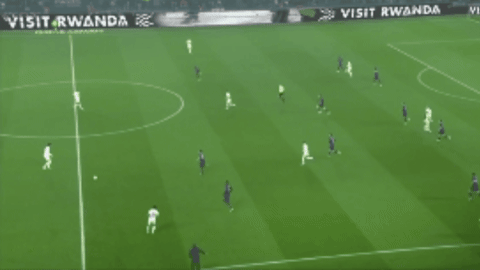

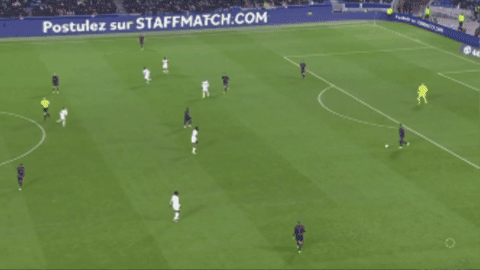
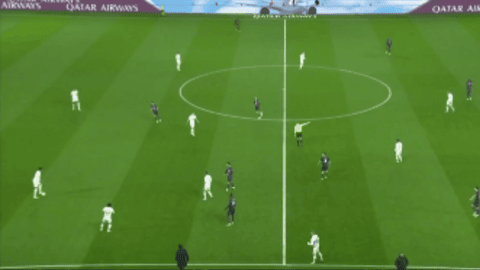





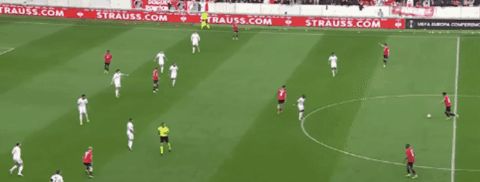

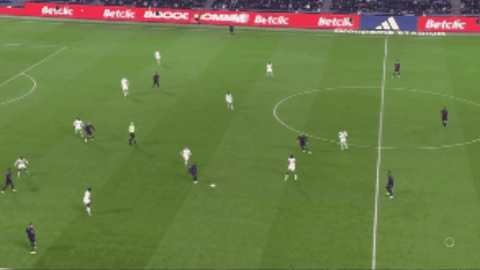





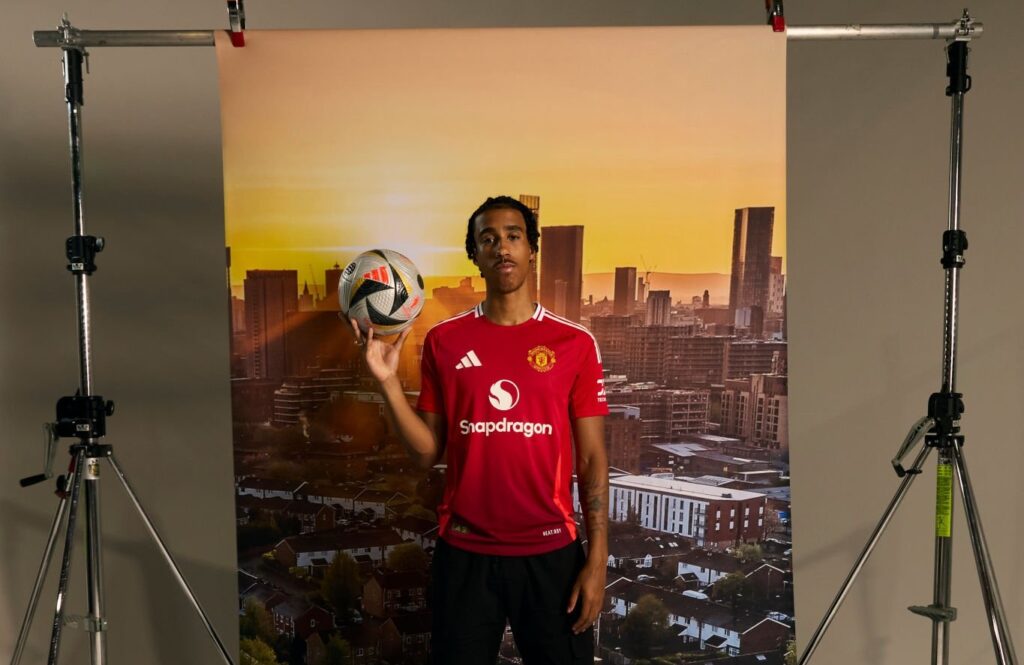


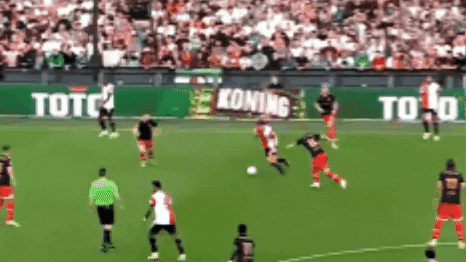
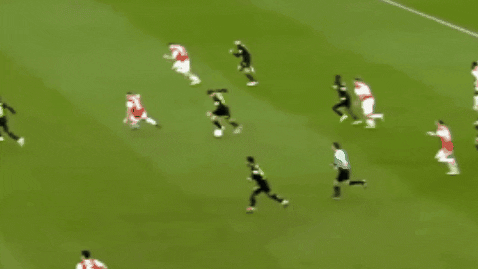
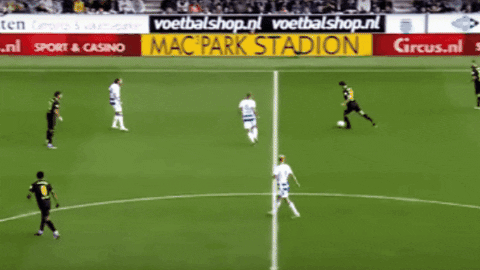
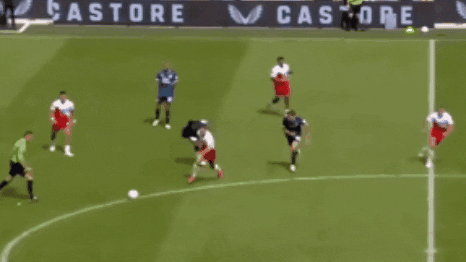


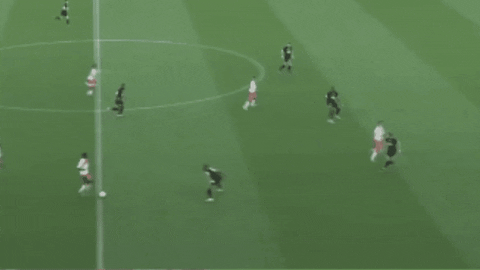
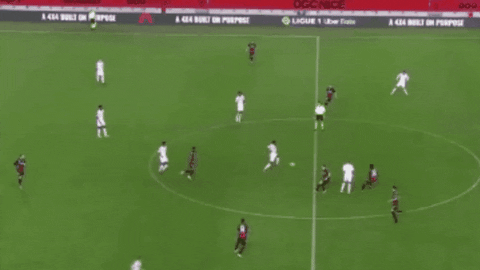
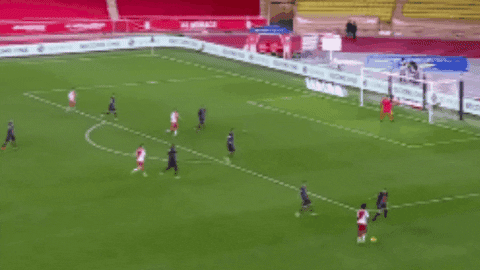

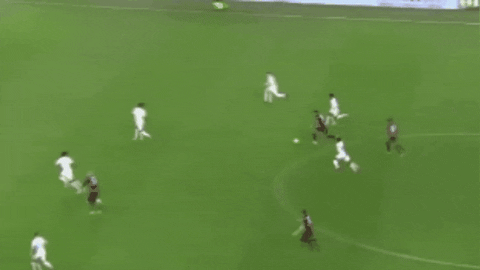

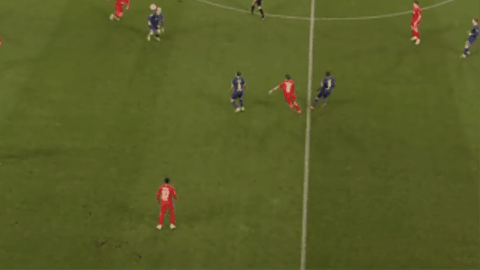
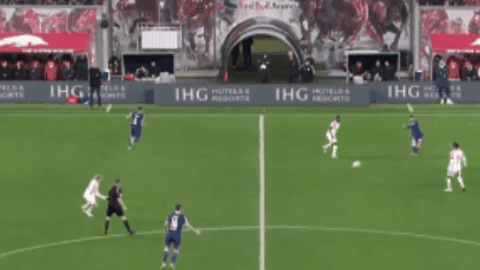
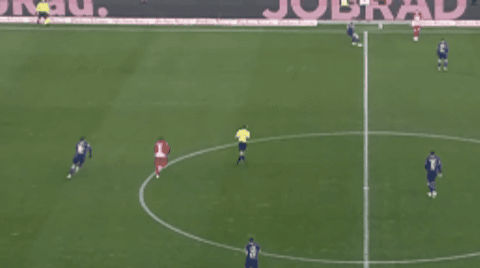
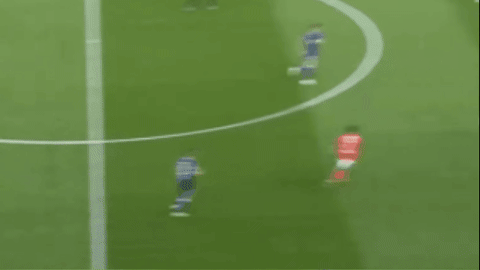
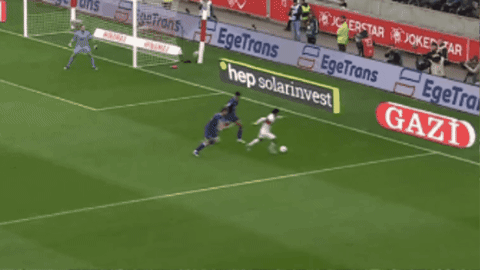



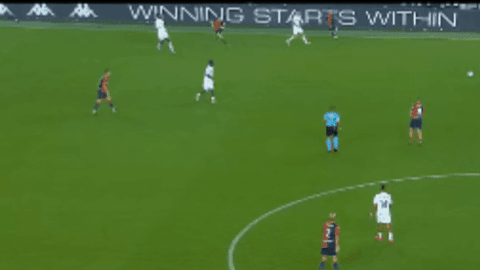
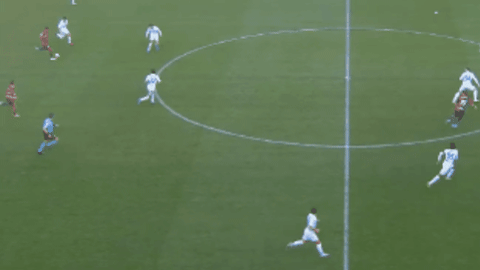


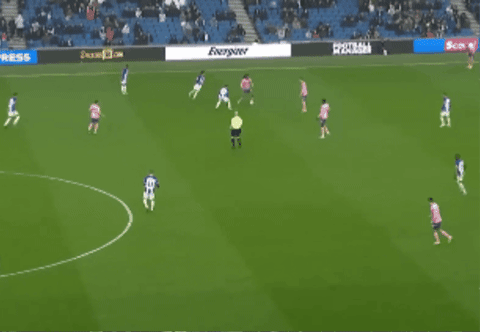
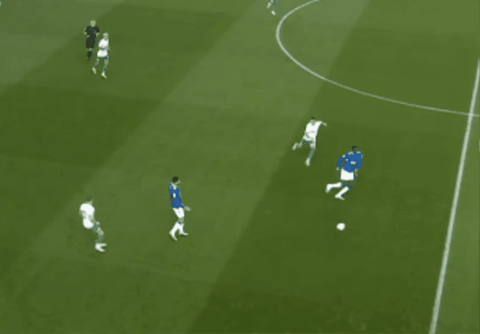
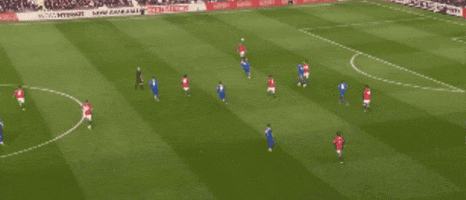
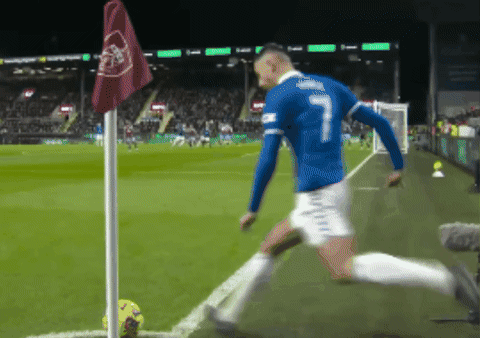
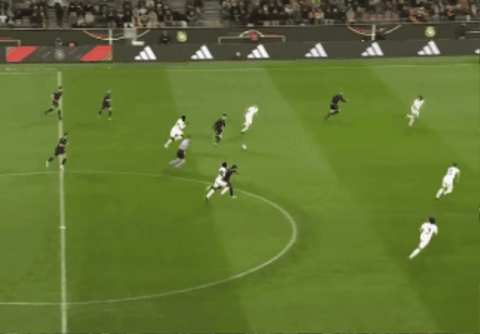










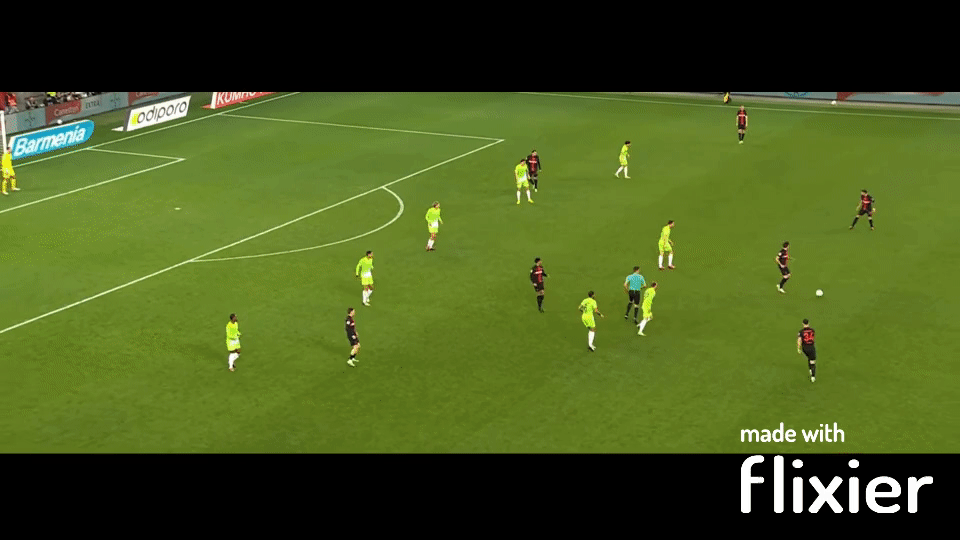
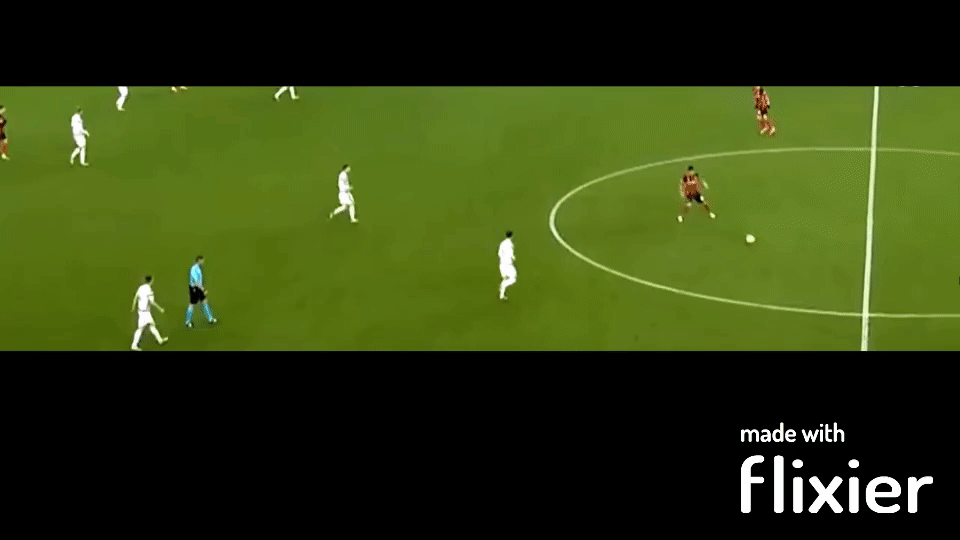







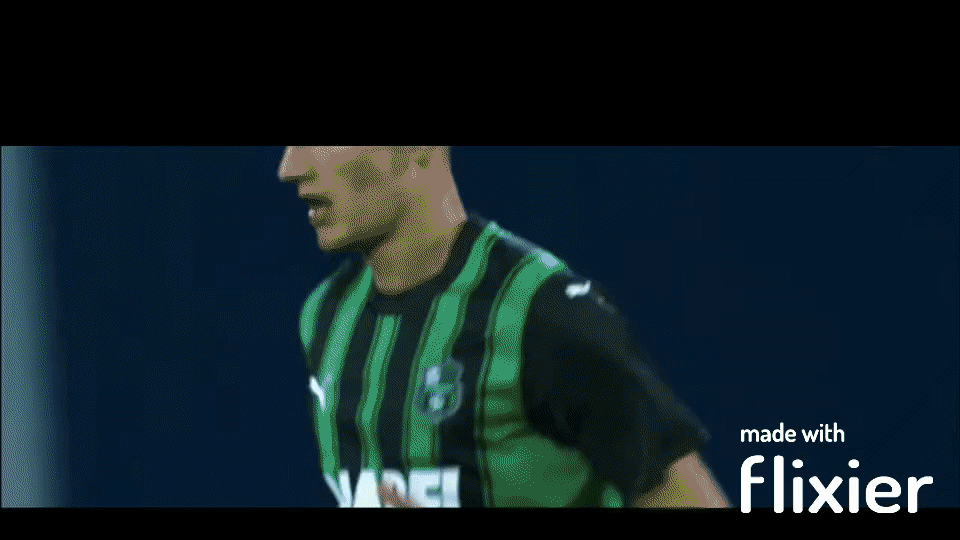







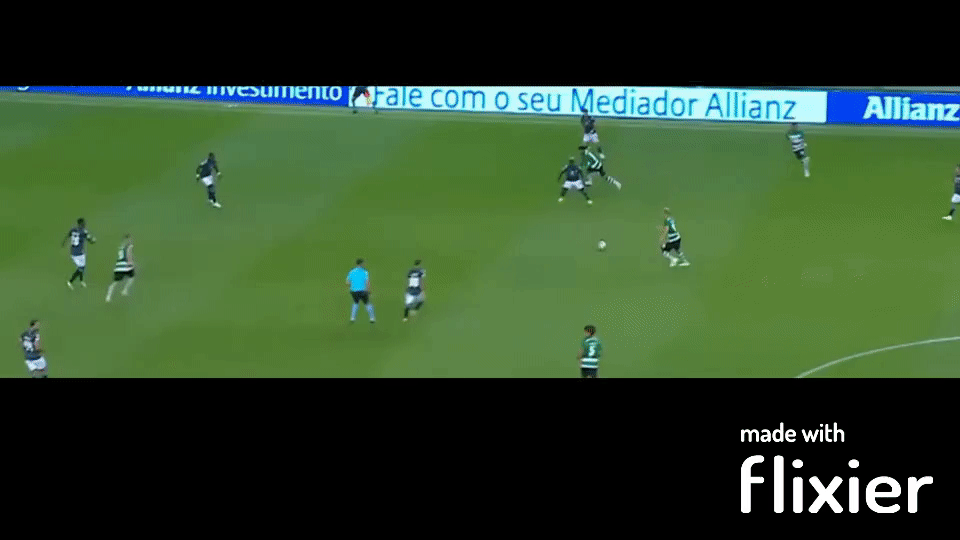
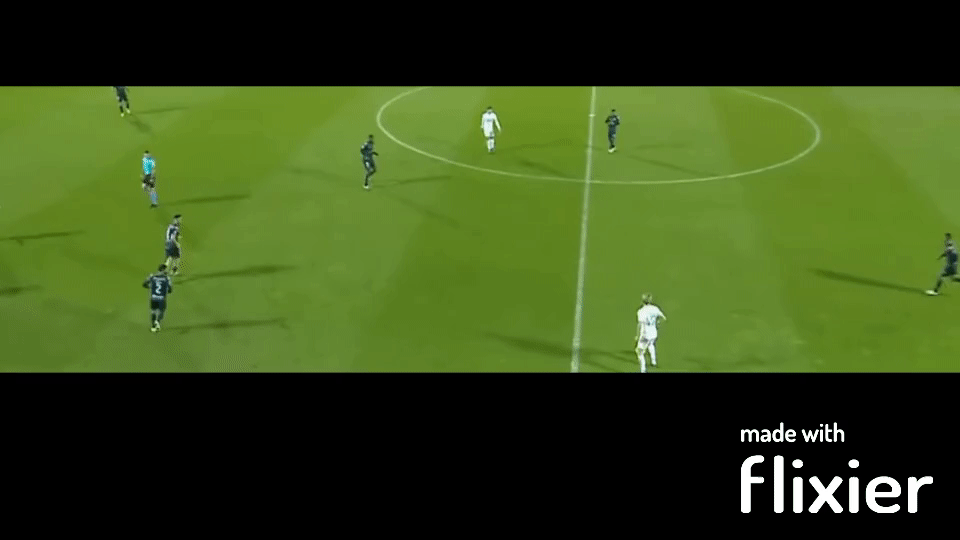
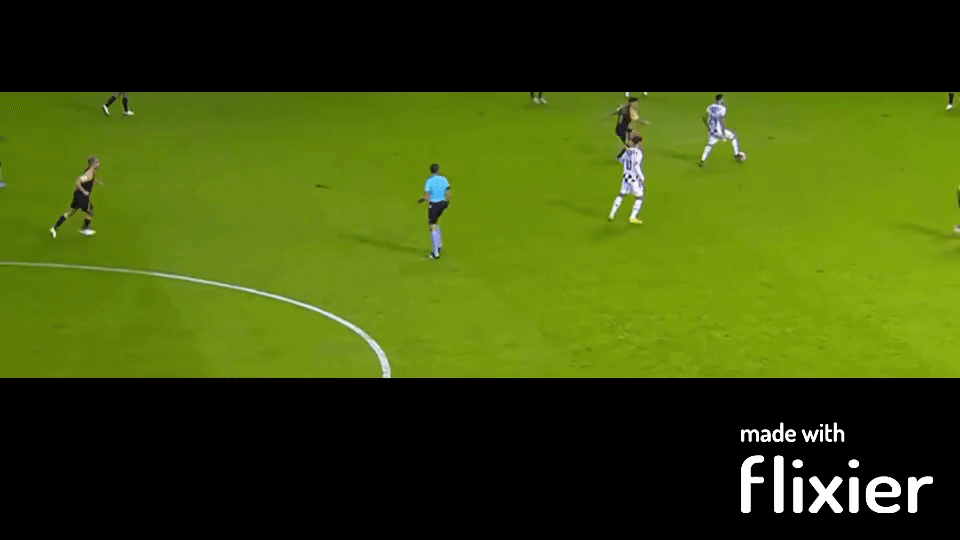
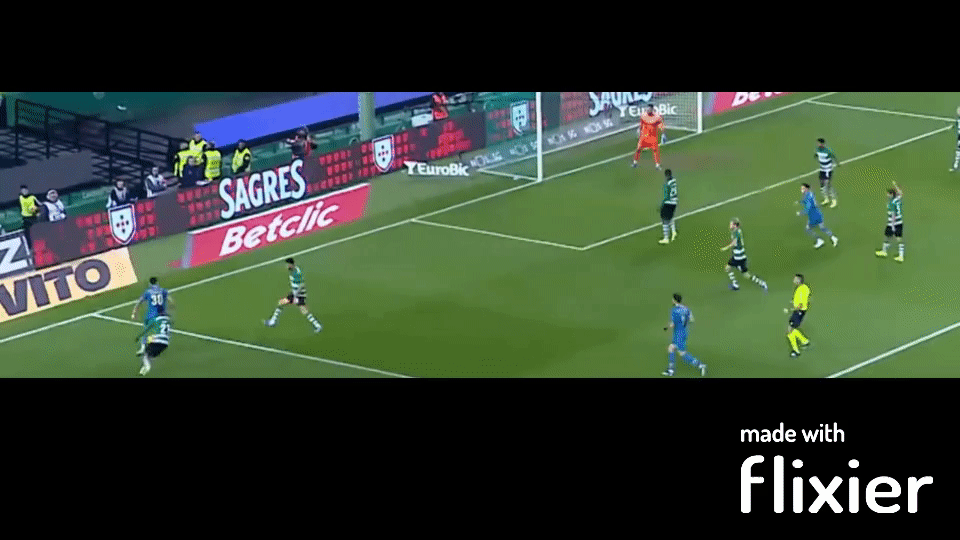




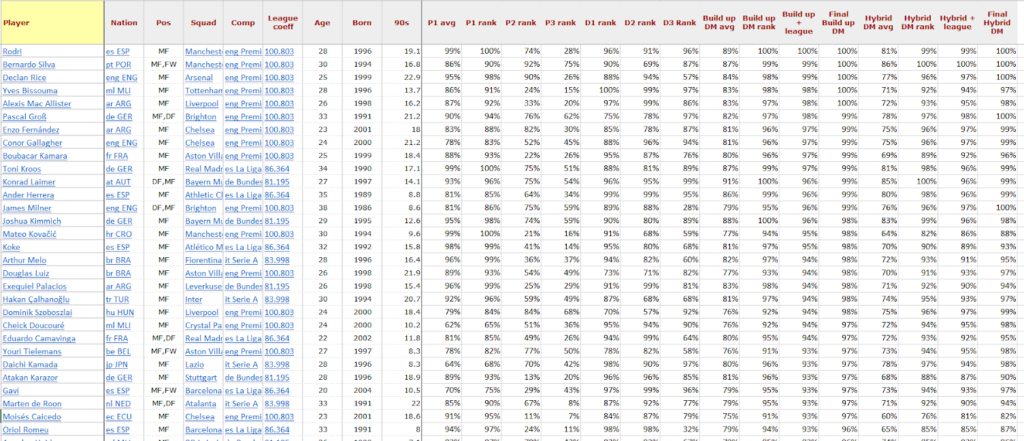

Recent Comments